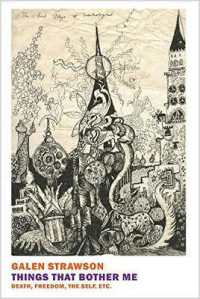Full Description
Why do groups of speakers in certain times and places come up with new varieties of languages? What are the social settings that determine whether a mixed language, a pidgin or a Creole will develop, and how can we understand the ways in which different languages contribute to the new grammar? Through the study of Malay contact varieties such as Baba Malay, Cocos Malay and Sri Lanka Malay, as well as the Asian Portuguese vernacular of Macau, and China Coast Pidgin, this book explores the social and structural dynamics that underlie the fascinating phenomenon of the creation of new, or restructured, grammars. It emphasizes the importance and interplay of historical documentation, socio-cultural observation and linguistic analysis in the study of contact languages, offering an evolutionary framework for the study of contact language formation - including pidgins and Creoles - in which historical, socio-cultural and typological observations come together.
Contents
Part I. Introduction: 1. Introduction to contact language formation; 2. Research questions; 3. The role of ecology in Asian contexts; 4. Theory of language and contact language formation; 5. Contact language formation beyond exceptional evolution; 6. Outlook; Part II. The Ecology of Monsoon Asia: 7. Monsoon Asia; 8. Sino-Javanese trade; 9. The city-ports; 10. Manpower in Southeast Asia; 11. The Western impact; Part III. Linguistic Ecologies of Southeast Asia: 12. Southeast Asia and the role of Malay; 13. Malay contact varieties; 14. Introducing contexts of formation; 15. The role of Portuguese in Southeast Asia and Southern China; 16. Summary; Part IV. Methodological Issues in the Study of Contact Languages: 17. The ideology of theory; 18. Multilingualism and transmission; 19. Conclusions; Part V. Contact Language Formation in Evolutionary Theory: 20. Competence, performance and socialization; 21. Language evolution and contact languages; 22. Functionalist assets for contact linguistics; 23. Conclusions; Part VI. Congruence and Frequency in Sri Lanka Malay: 24. The SLM community; 25. Selection and replication in SLM; 26. Freeing SLM from the chains of exceptionalism; 27. Final remarks; Part VII. Identity Alignment in Malay and Asian-Portuguese Diaspora: 28. The ecology of identity alignment; 29. Multiple alignments in contact settings; 30. Identity alignment and admixture; 31. Conclusions; Part VIII. Pidgin Ecologies of the China Coast: 32. Sociohistorical background of Europe-China relations; 33. The ecology of Macau and the Pearl River Delta; 34. Grammatical features of China Coast Pidgin; 35. The missing Makista link?; 36. Discussion; Part IX. Implications, Conclusions and New Horizons: 37. Theoretical and methodological implications; 38. Conclusions and new horizons; References; Index; Author index.








